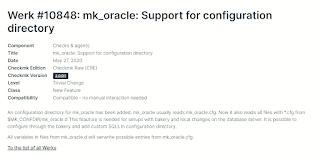EUNIX
Amanhã começa a maratona de quatro dias para os hackers inscritos no TSE tentarem quebrar a segurança das urnas eletrônicas que serão usadas nas eleições de 2010. 26 hackers foram inscritos até o momento para testarem a segurança do Sistema Eleitoral, entre eles hackers de empresas de segurança especializadas e independentes.
Cada hacker deverá descrever em um plano de testes, formulário estabelecido pelo TSE, o escopo do ataque como os sistemas que serão afetados, extesão geográfica do ataque (Urna/Sessão, Local de Votação, Cidade, etc), janela de tempo onde se daria o ataque e conhecimentos mínimos necessários para realização do ataque.
Esse ano todo o hardware e software será baseado em arquitetura GNU/Linux, projeto que já vinha correndo desde 2005. Além da flexibilidade de utilizar uma arquitetura OpenSource, baixo custo, arquitetura modular do kernel - permitindo carregamento dinâmico de drivers, a viabilização da biometria com software aberto (para o WinCE foi difícil encontrar bibliotecas de verificação biométrica “não pagas”) foi fundamental para o próximo passo das eleições: O uso da digital para identificação do eleitor! Hail to the LINUX!!!
<
Tomorrow will start the four days sage to the inscribed hackers on the TSE (Elections Supreme Courte) try to break the electronic ballot boxes which will be used on the next elections. 26 hackers were inscribed until now to test the Security of the system, among them hackers from private corporations and freelancer hackers.
Each hacker must describe a test plan, on a form elaborated by the TSE, having the scope of the attack, with the systems that will be affected, demographic extension of damage (ballot/session, vote site, cities, etc.), window where this attack would happen and the necessary knowledge to do this attack.
This year all the hardware and software will be based on a GNU/Linux architecture. A project that had been running since 2005. Besides the flexibility of using an Open Source architecture, the low cost, modular kernel architecture - making possible the dynamic load of drivers, the viability to build the biometry with open source (using the WinCE was hard to find free libraries to verify the biometry) was fundamental to the next step to our elections: The Digital printer to identify the elector! Hail to the Linux!
Cada hacker deverá descrever em um plano de testes, formulário estabelecido pelo TSE, o escopo do ataque como os sistemas que serão afetados, extesão geográfica do ataque (Urna/Sessão, Local de Votação, Cidade, etc), janela de tempo onde se daria o ataque e conhecimentos mínimos necessários para realização do ataque.
Esse ano todo o hardware e software será baseado em arquitetura GNU/Linux, projeto que já vinha correndo desde 2005. Além da flexibilidade de utilizar uma arquitetura OpenSource, baixo custo, arquitetura modular do kernel - permitindo carregamento dinâmico de drivers, a viabilização da biometria com software aberto (para o WinCE foi difícil encontrar bibliotecas de verificação biométrica “não pagas”) foi fundamental para o próximo passo das eleições: O uso da digital para identificação do eleitor! Hail to the LINUX!!!
<
Tomorrow will start the four days sage to the inscribed hackers on the TSE (Elections Supreme Courte) try to break the electronic ballot boxes which will be used on the next elections. 26 hackers were inscribed until now to test the Security of the system, among them hackers from private corporations and freelancer hackers.
Each hacker must describe a test plan, on a form elaborated by the TSE, having the scope of the attack, with the systems that will be affected, demographic extension of damage (ballot/session, vote site, cities, etc.), window where this attack would happen and the necessary knowledge to do this attack.
This year all the hardware and software will be based on a GNU/Linux architecture. A project that had been running since 2005. Besides the flexibility of using an Open Source architecture, the low cost, modular kernel architecture - making possible the dynamic load of drivers, the viability to build the biometry with open source (using the WinCE was hard to find free libraries to verify the biometry) was fundamental to the next step to our elections: The Digital printer to identify the elector! Hail to the Linux!


Comentários
Postar um comentário